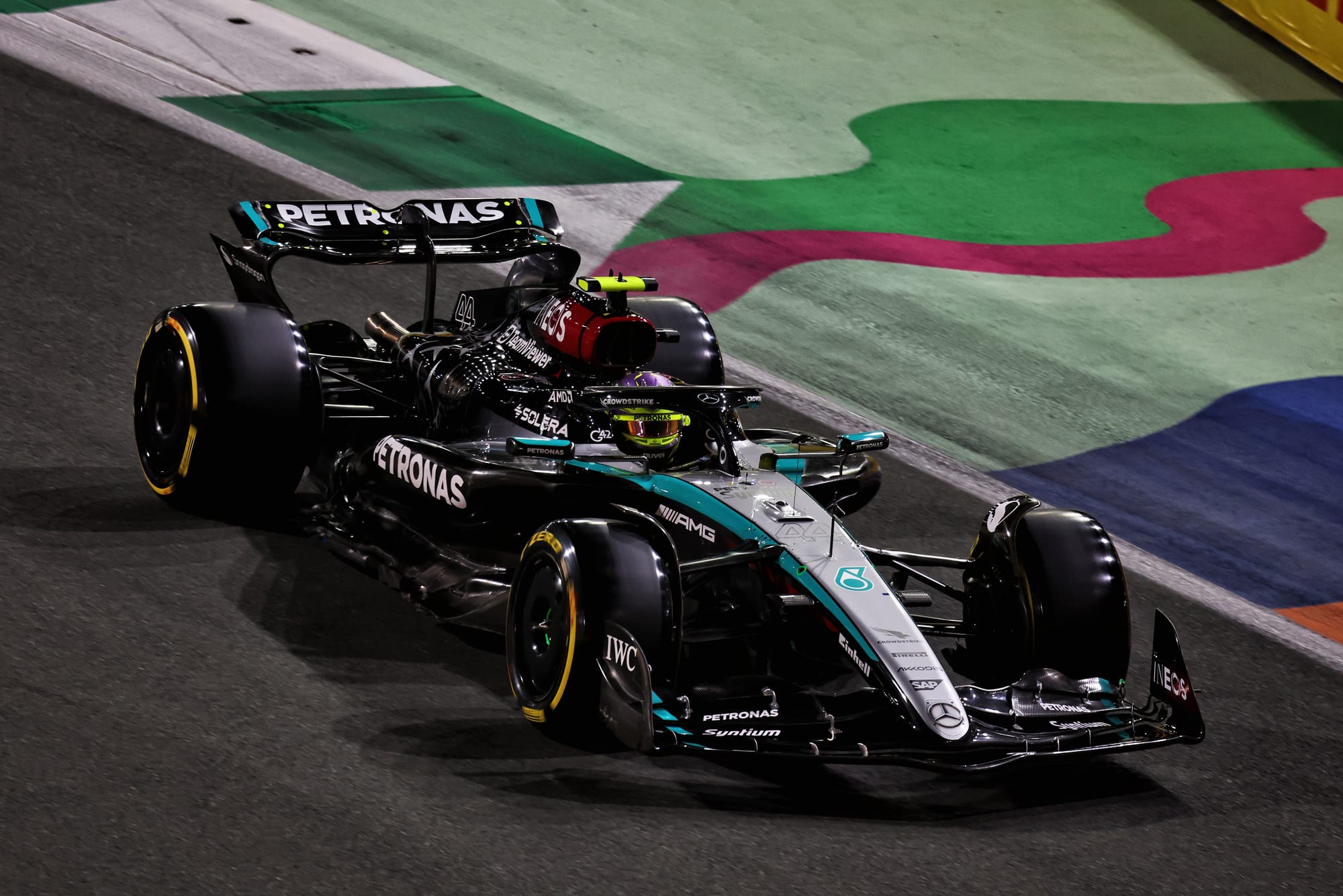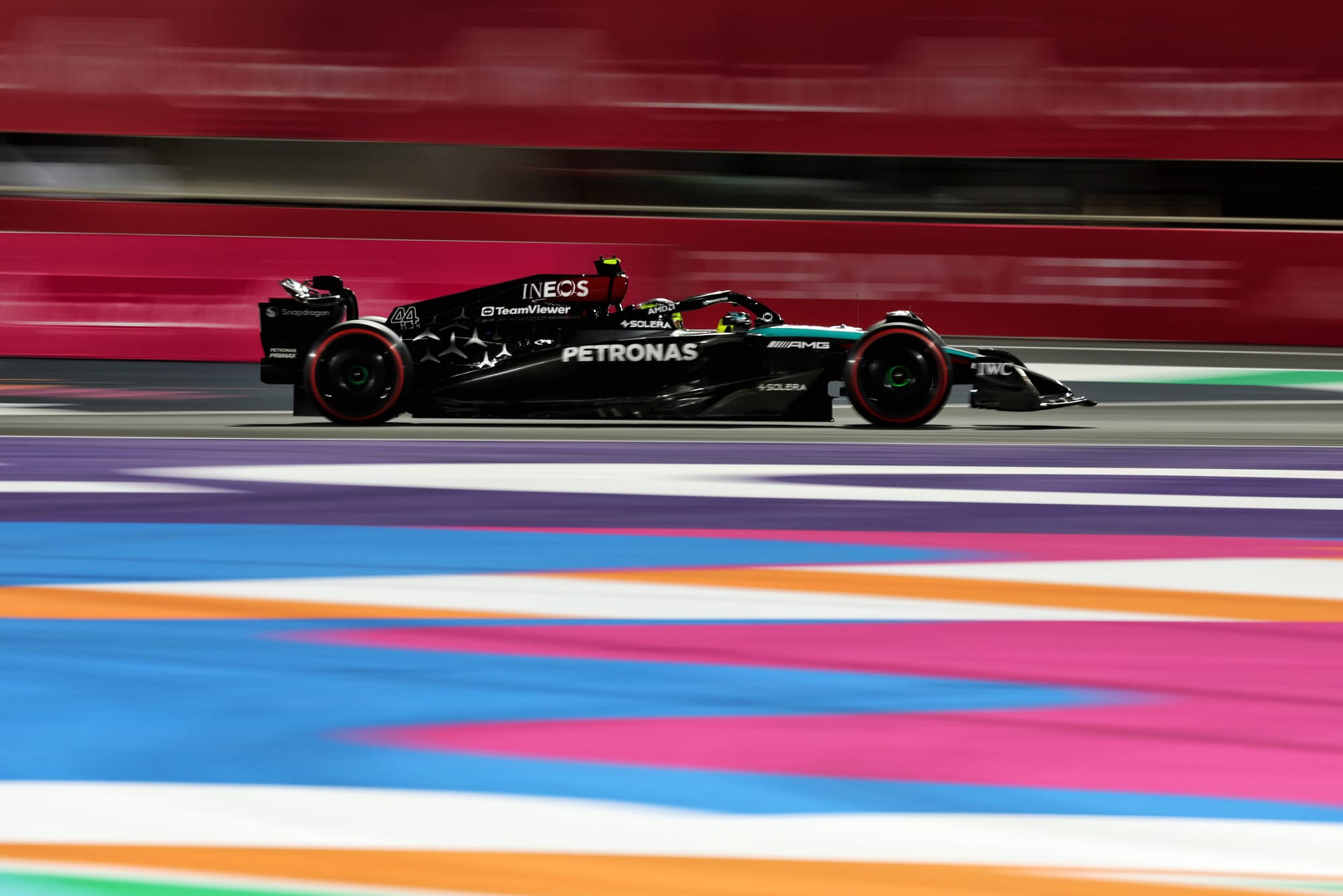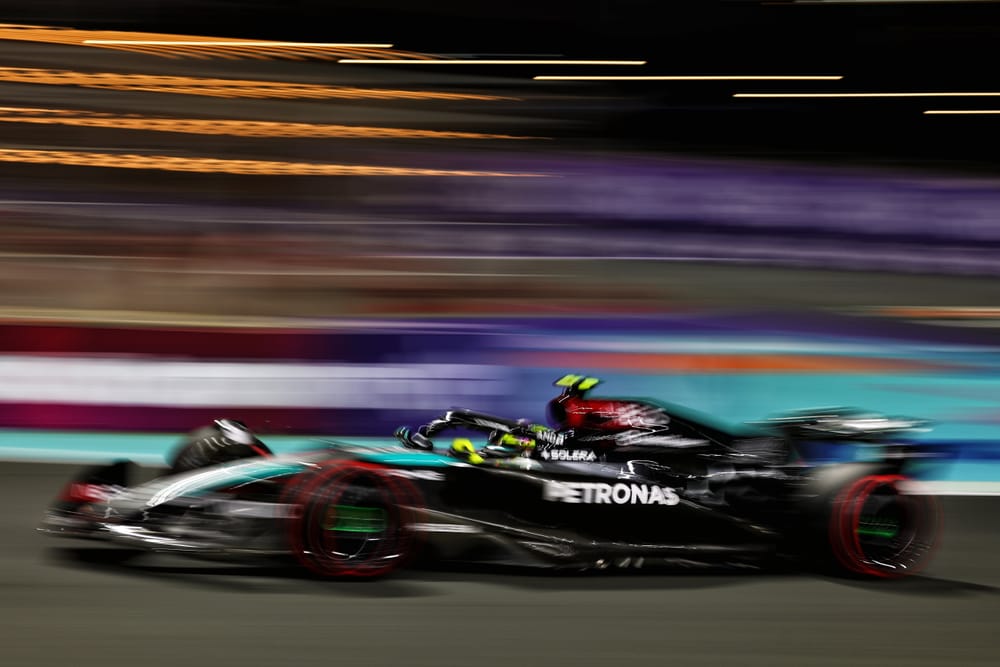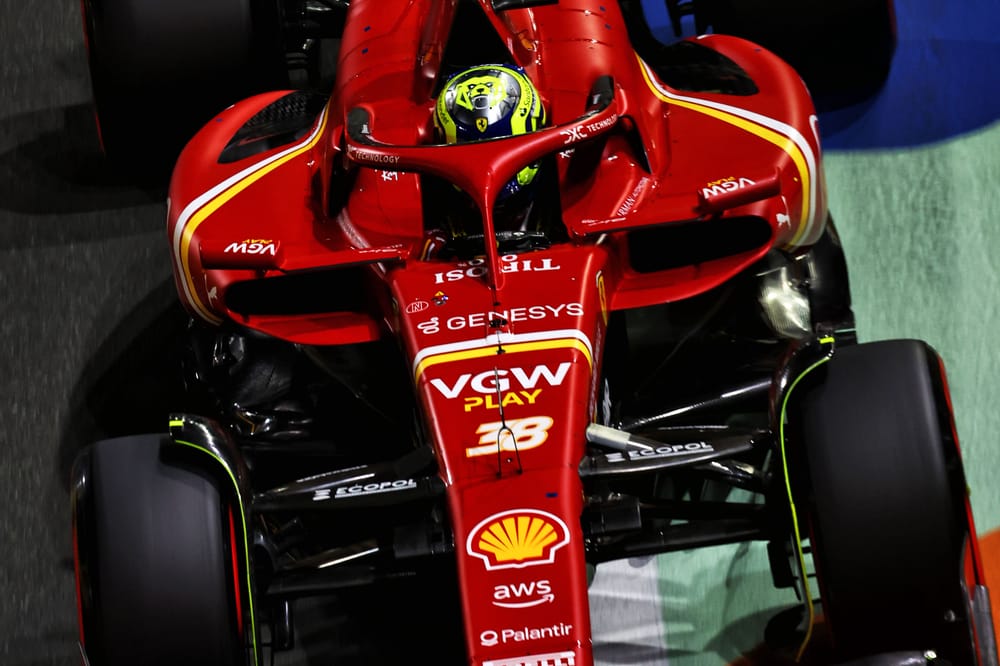Up Next

Reading what Lewis Hamilton has said in Mark Hughes's analysis of Mercedes' woes at the Saudi Arabian GP, points me in the direction of where Hamilton's bouncing problem is coming from.
And the conclusions we can draw from this tells us how much work Mercedes still needs to do if it's to get anywhere near the front consistently.
“We have pretty bad bouncing which we’ve not been able to fix,” said Hamilton. “We made changes overnight and the car felt so much better in FP3 earlier today.”
“It felt difficult again in qualifying. We tried every set-up change but we just can’t get rid of the bouncing.”
While that sounds straightforward enough, these are very revealing comments.
In hotter climates, a car that is borderline on hitting airflow separation troubles will suffer from more problems. On top of that, because of the heat, you will actually generate less downforce.
Before these ground effect cars came into play, the problem was mainly with the front wing as it was running reasonably close to the ground. Sometimes the rear wing would also suffer but that was mainly when the DRS closed. Now with ground effect cars, it’s a completely different beast.

These cars now generate roughly 75% of their downforce from the underfloor. This is critical to airflow separation problems, so it requires a lot of airflow separation management in the initial floor design.
Based on what Hamilton said, in FP3 with a higher rear wing level the car was better.
It had very little to do with the wing as it now produces a small percentage of the rear downforce, it’s more to do with the fact it was in the heat of the day.
That means the car would produce less downforce and because of that the ride height overall would be that little bit higher.

The airflow separation would also be increased as thanks to the thinner air it would start earlier and end later. Again, that means less downforce when the car was close to the ground.
Compared to FP3, in qualifying the air temperature was two degrees cooler and the track temperature was 12 degrees cooler. Both of these would mean the car overall produces more downforce, which would mean that the car would be running at a lower ride height.
With the more dense air, any separation problems in the underfloor would hold on for longer and be more aggressive when they inevitably happened. This means that the car would suffer more porpoising, which would lead to what he calls more bouncing in qualifying.
As I said earlier these cars ‘require a lot of airflow separation management in the initial floor design’. We don’t see the underfloor too often, but I would imagine that if we compared the Red Bull to the Mercedes underfloors from underneath we would see two very different philosophies.




